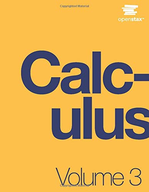?Let \(\mathbf{a}=\left\langle a_{1}, a_{2}\right\rangle\) , \(\mathbf{b}=\left\langle
Chapter 2, Problem 37(choose chapter or problem)
Let \(\mathbf{a}=\left\langle a_{1}, a_{2}\right\rangle\) , \(\mathbf{b}=\left\langle b_{1}, b_{2}\right\rangle\) , and \(\mathbf{c}=\left\langle c_{1}, c_{2}\right\rangle\) be three nonzero vectors. If \(a_{1} b_{2}-a_{2} b_{1} \neq 0\), then show there are two scalars, \(\alpha\) and \(\beta\), such that \(\mathbf{c}=\alpha \mathbf{a}+\beta \mathbf{b}\).
Text Transcription:
a = langle a_1, a_2 rangle
b = langle b_1, b_2 rangle
c = langle c_1, c_2 rangle
a_1 b_2 - a_2 b_1 neq 0
alpha
beta
c = alpha a + beta b
Unfortunately, we don't have that question answered yet. But you can get it answered in just 5 hours by Logging in or Becoming a subscriber.
Becoming a subscriber
Or look for another answer
